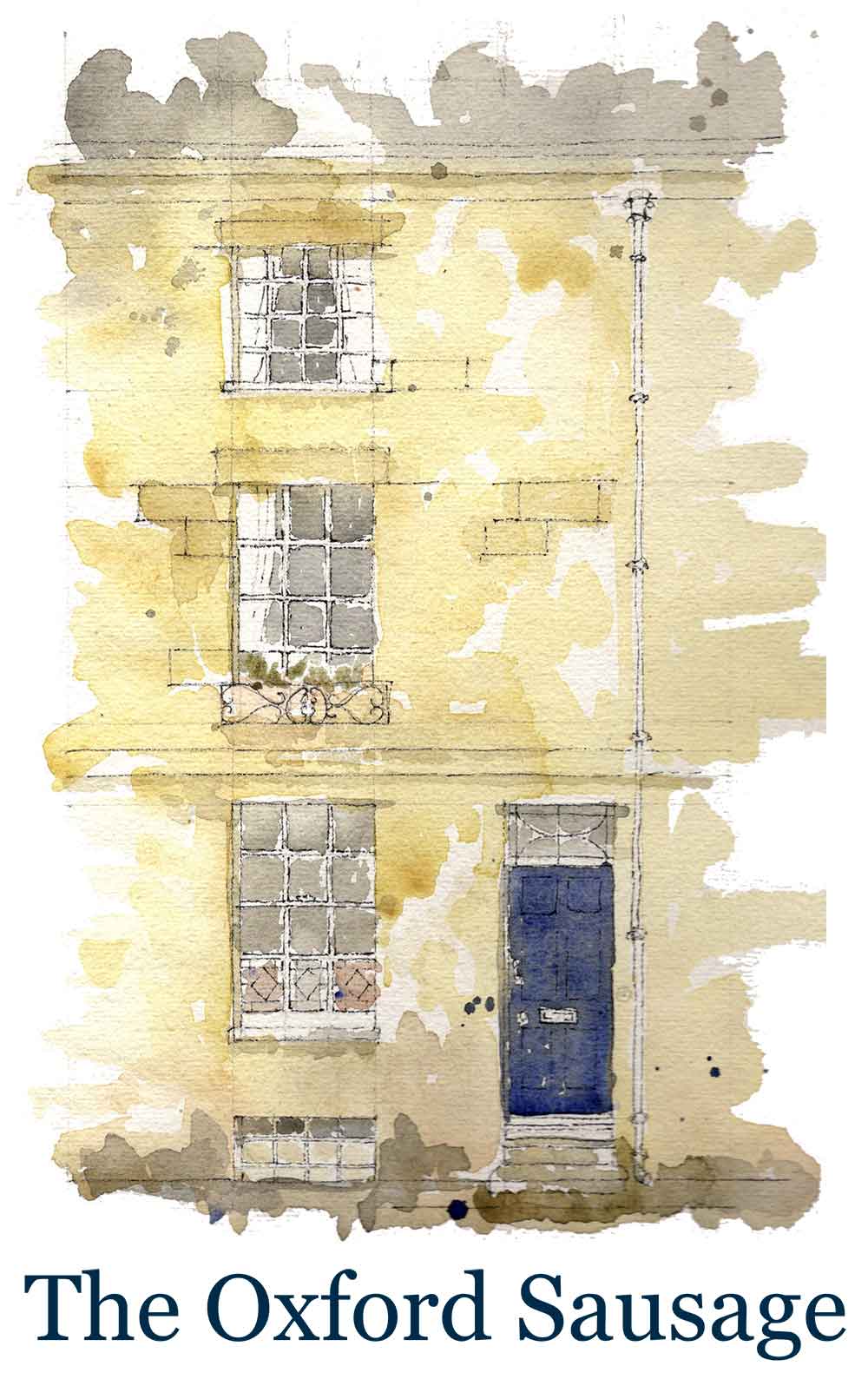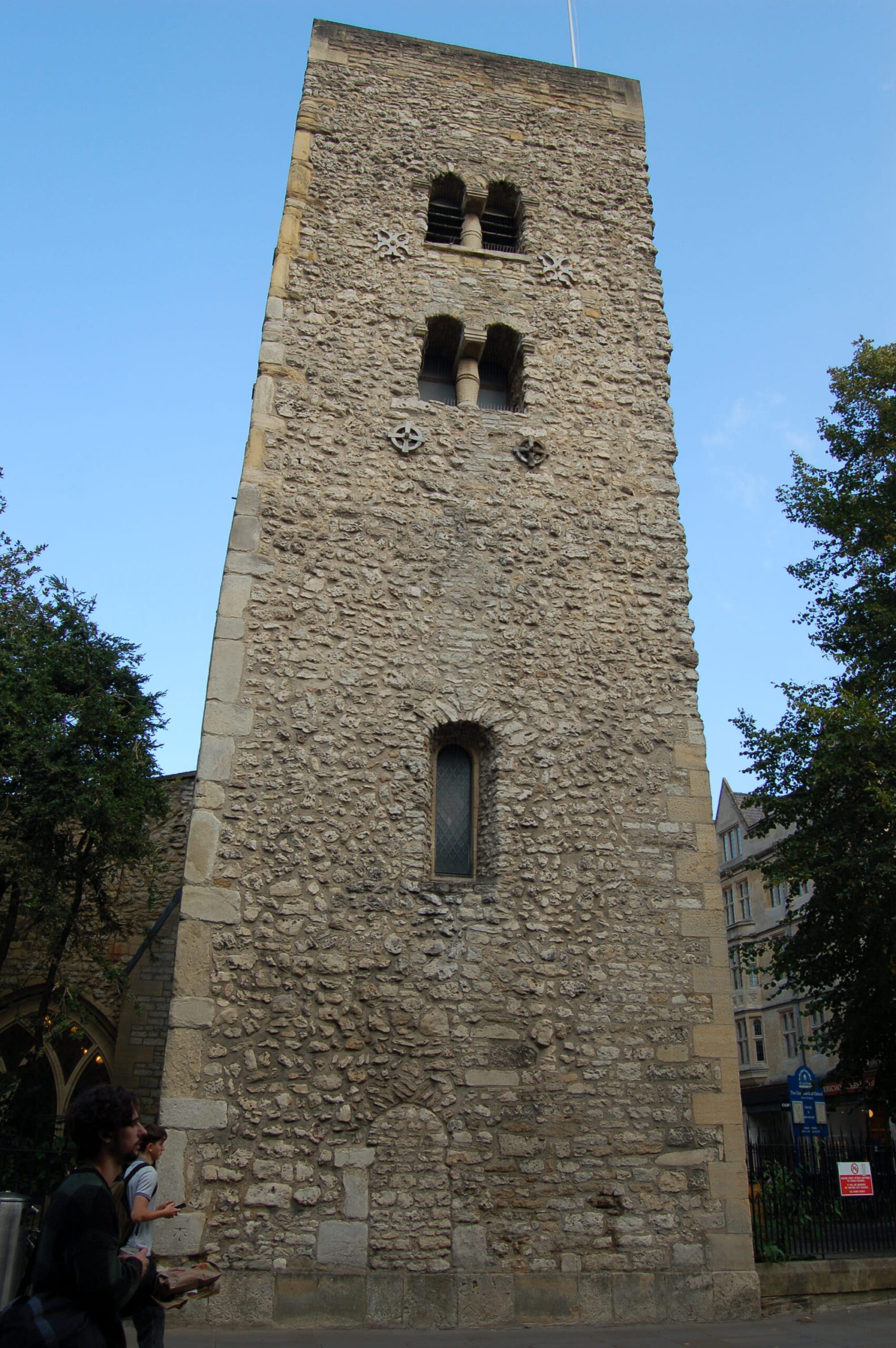I’m attempting to climb all the towers in Oxford. The body being willing. And so, as the festival of Michaelmas approaches (29 September, traditionally one of the four quarter days that marked the end of harvest season and the beginning of a new academic year) it seems apt to try the square tower of St Michael at the North Gate, whose feast day this celebrates. What I hadn’t expected was to be locked inside. What you might call a proper visitor’s experience from the days when this place also housed a prison. But more of that later.
Standing 63 feet high with a relatively easy ascent of 97 steps, it’s an unassuming building on the corner of Cornmarket and Ship Street and often overlooked by passers-by. It is certainly less grand than Tom Tower at Christ Church and displays a more modest appearance than the loftier gothic tower of the University Church of St Mary the Virgin, with its attention seeking spire. But they’d be missing out on a treat. For the tower of St Michael at the North Gate has been here far longer than anything else around. Some say it dates from as early as 980. Which means it has witnessed over 1,000 years of history. And makes it the oldest building in Oxford.
There’s a small charge to go up. It’s a church tower now and this income along with that from the little shop filled with interesting ecclesiastical books and fairtrade offerings pays for the church to remain open during the day, so it’s all in a good cause. A little oasis in a busy city centre. It has not always been so.
“The tower was built as part of the defensive structure of the city,” explains Andrew Spicer, an Emeritus Professor of Early Modern History who doubles as a church warden and has kindly agreed to take me up. A look out post that stood alongside the North Gate of the town ramparts in the days when the locals were worried about attacks from the Danes. “There may well have been a Saxon church on the site, but it wasn’t until the 13th century that the church gets attached to the tower itself.”
We are standing in what is known as the tower room, which is level with the street. The walls are made from warm roughly hewn Headington stone, all higgledy-piggledy, larger pieces mixed with smaller. They’d have been hard to breech being four feet thick, and show blocked up archways where once doors and windows were. The room is still used as a meeting place – a quiet, contemplative space of soft furnishings and reading materials. A far cry from the time when cartloads of rosemary and lavender were purchased to diffuse the bugs and foul smells caused by the close quartered soldiers billeted here during the English Civil war.
We know this because the church holds some of the oldest full sets of church warden accounts in the country. They date back as far as the 15th century. To a historian this is like finding the holy grail. Andrew shows me a draft from 1437 displayed in a cabinet up the stairs on the first floor, itemising goods bought for the church neatly written in beautiful clear italics. “It tells you that Jo was paid to take down the altar, or that they paid so and so to take out the statue or buy the book of common prayer,” says Andrew. Holly and ivy bought for Christmas, whitewash to paint over icons. A record of the changes made to the fabric of the building and a clear indicator of which direction the prevailing religious wind was blowing.
These are presented as part of the ‘tower treasures’, a smorgasbord of rather extraordinary curiosities. Here you will find a King William III coin from 1695, alongside some 17th century wig curlers; a letter from John Wesley who preached the Michaelmas sermon from the church pulpit 300 years ago; the marriage certificate for the poet and designer William Morris and his muse Jane Burden in April 1859. There are the old city arms (it has been the city church from 1971 after St Martins at Carfax was demolished and All Saints was refurbished as Lincoln College library) and what is known as the Bocardo Box, a rosewood collecting receptacle from when the Bocardo gaol stood above the North Gate, directly accessible from the tower (you can still see where the door was). Debtors imprisoned here would dangle this from their window in the hopes that passersby might donate a few pennies towards a more palatable supper.
Further up the tower there is the solid oak door through which Archbishop Cranmer, and Bishops Hugh Latimer and Nicholas Ridley were led to their deaths after they were imprisoned at the Bocardo during the reign of the Catholic Queen Mary in the 1550’s. They were all burned at the stake (Cranmer a year after the other two) for refusing to denounce their Protestant beliefs. The site is marked by a cross on Broad Street. But there were Catholics held here too – George Nichols and Richard Yaxley – priests that were hung drawn and quartered on Longwall Street after being found guilty of treason under Elizabeth 1. Their heads were set up on the castle and their quarters on the city gates. I’d have got a good gory view from where I am standing.
My favourite exhibit is the Sheela-na-gig, a square of carved stone showing a naked woman with arms outstretched and oversized genitals. It dates from the 12th century and was taken down from the third-floor level on the west side of the tower overlooking Cornmarket. Such a prominent position must have meant it had some important purpose – maybe it was intended as a promise of fecundity for visitors entering through the main city gate. It feels rather incongruous in a church but is all the better for it.
I find the cabinets of curiosities utterly charming, but I can see that the displays might seem a little old fashioned to the modern museum goer used to 3D images and interactive experiences. Indeed, there are plans afoot and a fundraising initiative for renovation work, including opening the ceiling space so that artefacts can be shown off better, new windows to reveal the Saxon balusters (decorative pillars) obscured today by grime and pigeon droppings, and most importantly to pay for a watertight roof. The place is letting in water. Something must be done. And urgently.
In many ways it is surprising that the tower is still standing. What with its prime location. St Mildreds another parish church that once stood in Turl Street was demolished to make way for Lincoln College. And there have been fires and not entirely successful structural changes. “The bells can no longer be rung full circle,” explains Andrew now on the third level of the tower where the giant bells hang. “Until the 19th century when the tower was propped up by other buildings it didn’t make any difference. But ringing the bells this way now would make the structure swing and sway. It would bring the tower down.” A less boisterous system called the Ellacombe chimes was installed, designed by a man who branded all bellringers as unruly and drunkards. It meant the bells are fixed and can be operated by a single person. Much less fun but maybe a good thing. There’s a description on the way up describing the occasion when a 14th century bellringer fell to his death through an open bell hatch. “Besides,” says Andrew, a bellringer himself. “There are plenty of other bell towers in Oxford”. I’d recommend the one at St Giles if you fancy a go.
And so at last we reach the top. I’ve been up other towers in Oxford but still nothing quite prepares you for the views over the city. They are all slightly different. And it’s fun to see which dome, or spire or indeed tower you can spot from the railings. But the weather isn’t quite good enough for photographs, so I decide to come back later.
And that’s when I get locked in. It was early evening. I’d gone up without registering with the lady on the desk. And I hadn’t realised that they bolted the door at the bottom once the last paying visitor had departed after 5.30pm. For a brief scary moment, I imagined being there for the night. Me and the Sheela-na-gig and the ghosts of all those prisoners. But unlike them I had a mobile phone. And it didn’t take long for someone to come to my rescue. I wonder, though. Maybe a small payment to experience what it is like to be incarcerated might bring in a bob or two to help restore the place. Just a thought.
Special thanks to Andrew Spicer and Reverend Anthony Buckley
If you would consider helping with the refurbishment of the tower by making a donation, then you can do so here.
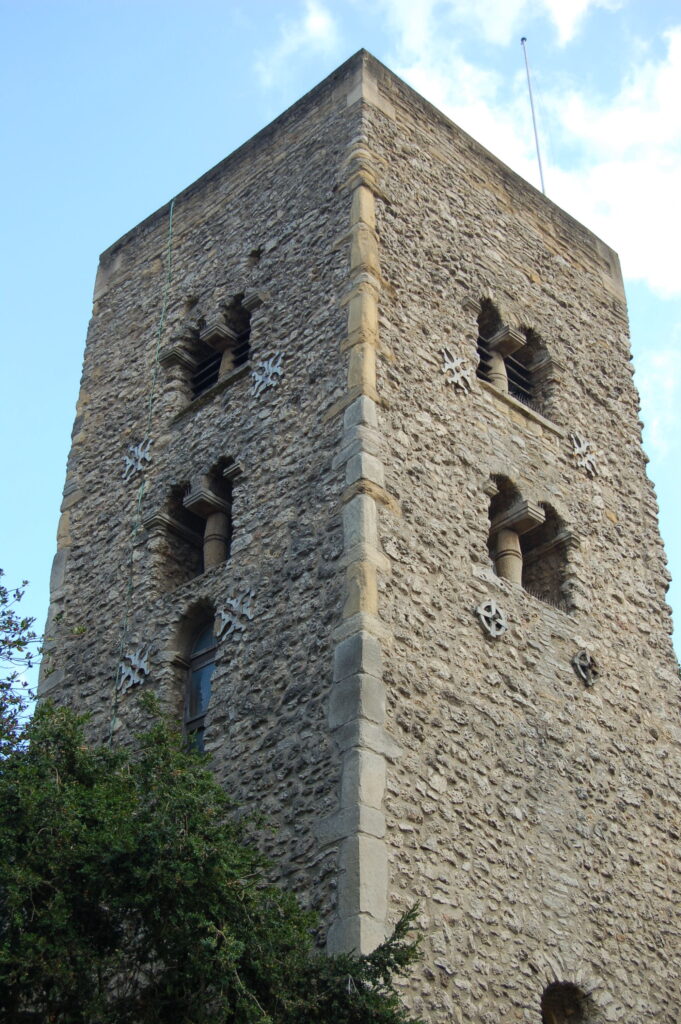
The double belfry openings, long and short cornerstones and rubble construction are all signs of the tower’s Saxon heritage. It probably always had bells, used to sound the alarm before it became part of the church.
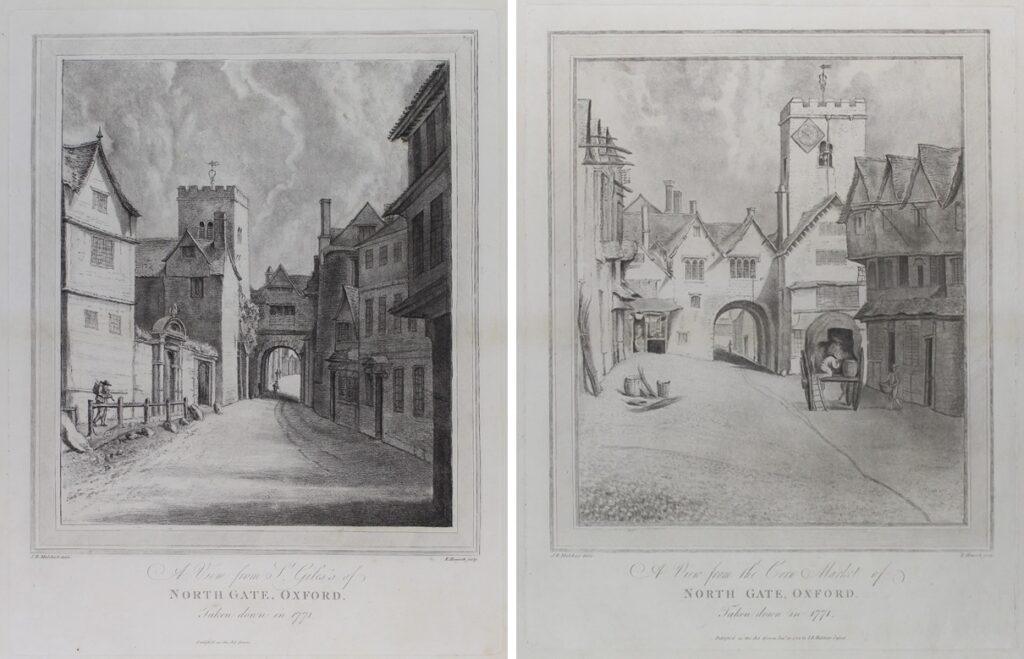
Looking through the North Gate from St Giles (left) and from Cornmarket (right). You can see the Bocardo box hanging down over the gate in the right hand picture.
Elizabeth Howorth after John Baptist Malchair , Courtesy of Saunders of Oxford Prints.
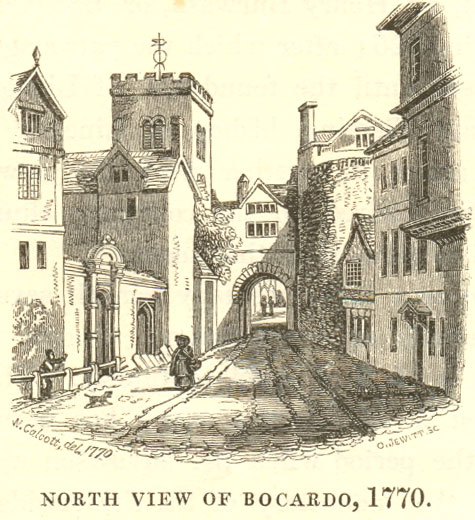
Just before the North Gate was pulled down in 1771
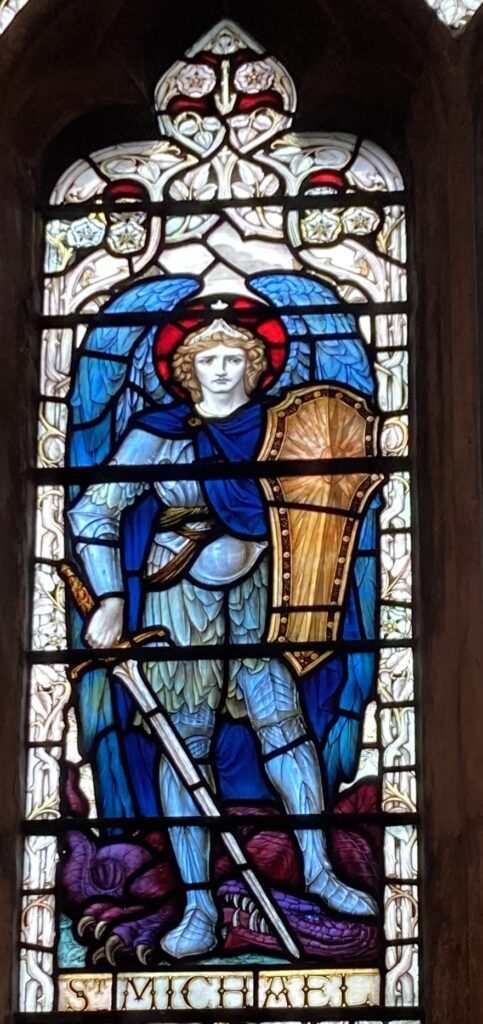
Stained glass from the Church of St Michael at the North Gate. Churches dedicated to St Michael were often found at city gates. There was once a St Michaels Church at the South Gate too (demolished by Cardinal Wolsey to make way for Christ Church) as is seen in this charming ditty.
At Northgate and at Southgate too
St Michaels guards the way
While o’er the East and o’er the West
St Peter holds the sway.
St Peter-in-the-East is now the library for St Edmund Hall, St Peter in the West the chapel for St Peter’s College.
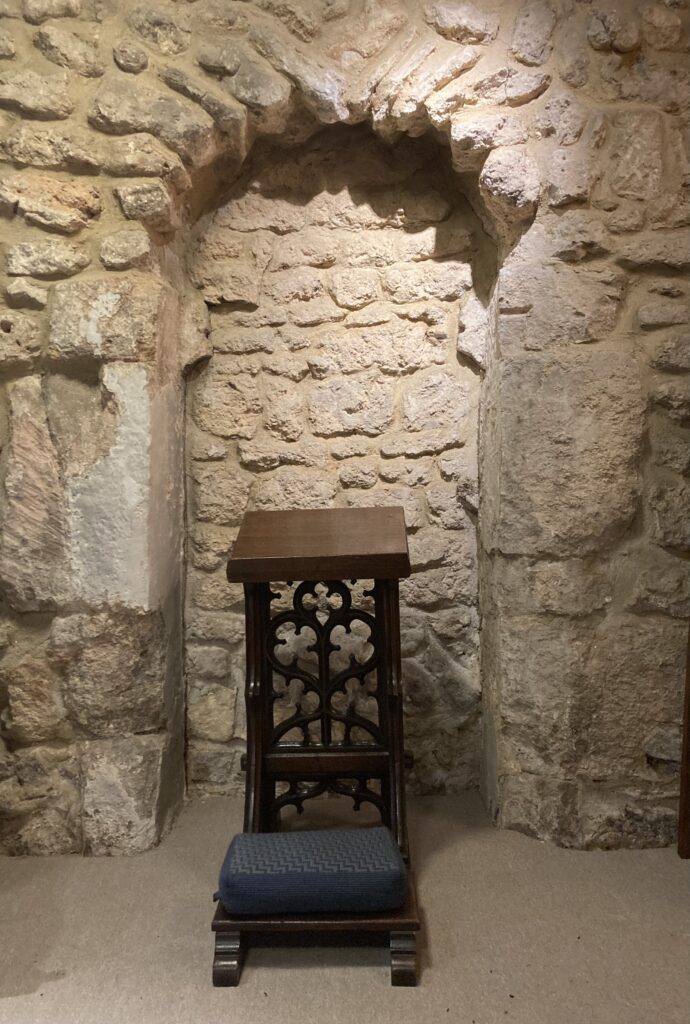
The oldest room in Oxford. The doorway would have once opened on to Cornmarket
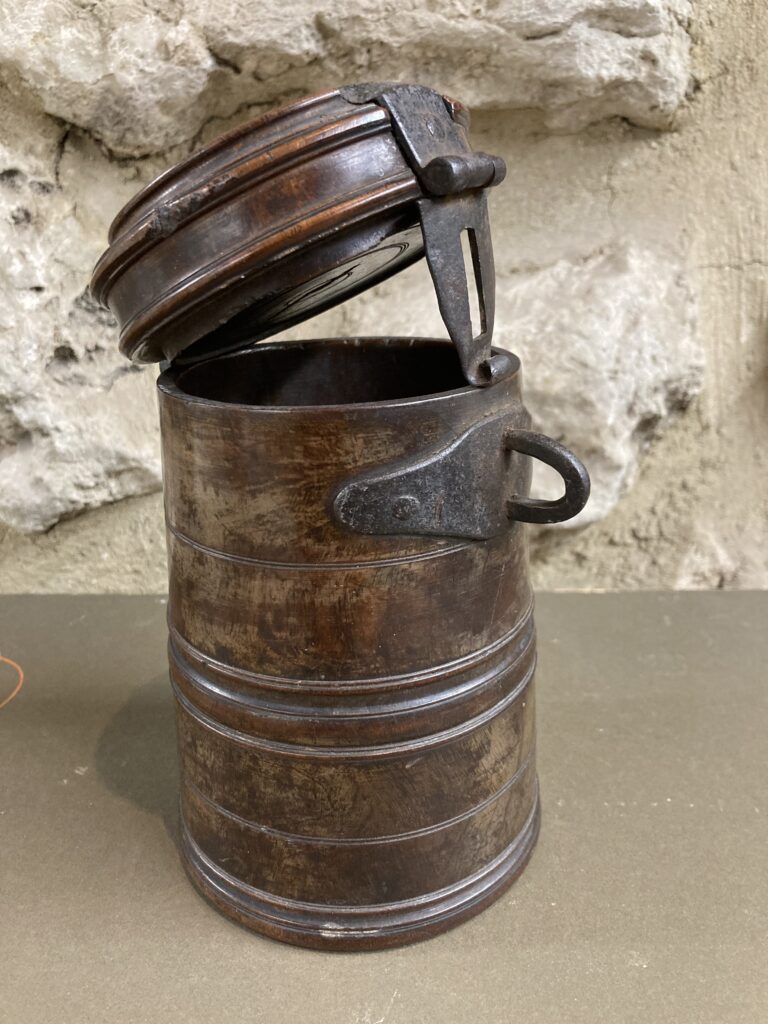
Bocardo is a name given to an inescapable logistical question, hence a good name for a prison. The Bocardo Box was dangled by a string by those incarcerated above the North Gate.
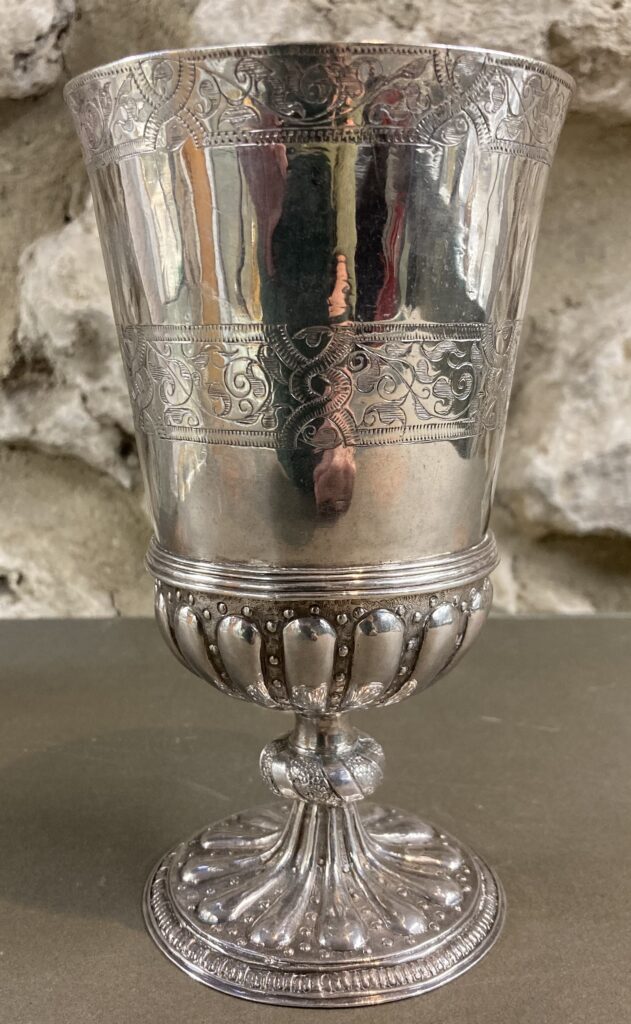
The ‘Treasury’ holds lots of silver plate. This Elizabethan chalice is still used at Easter and Christmas and dates from 1562. Chalices had to be made much larger after the Reformation as communion was now taken by all the congregation, not just the priests. They needed extra flagons of wine to keep topping them up.
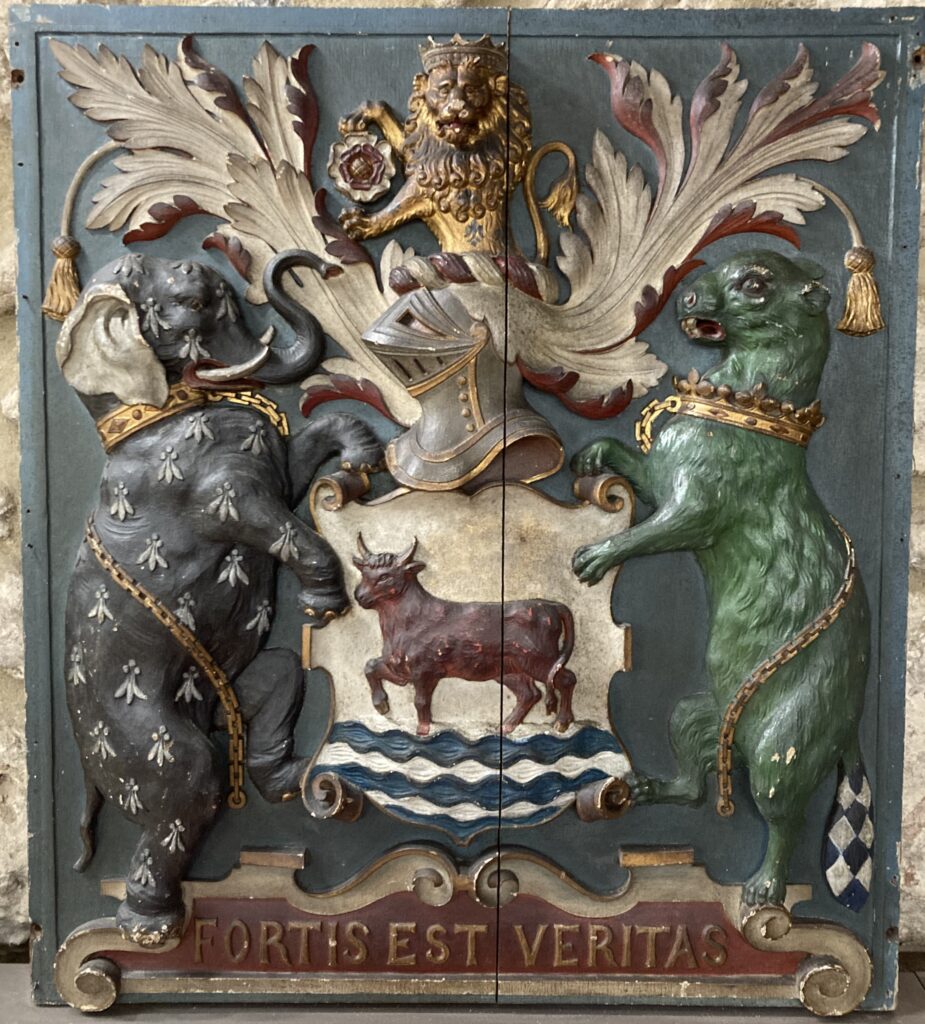
A carved coat of arms from the City of Oxford, inherited when St Michael at the North Gate became the city church in 1971. There is a place at the front of the church for the Mayor of Oxford to rest his mace when he attends a service. And an elephant and beaver carved into the pew.
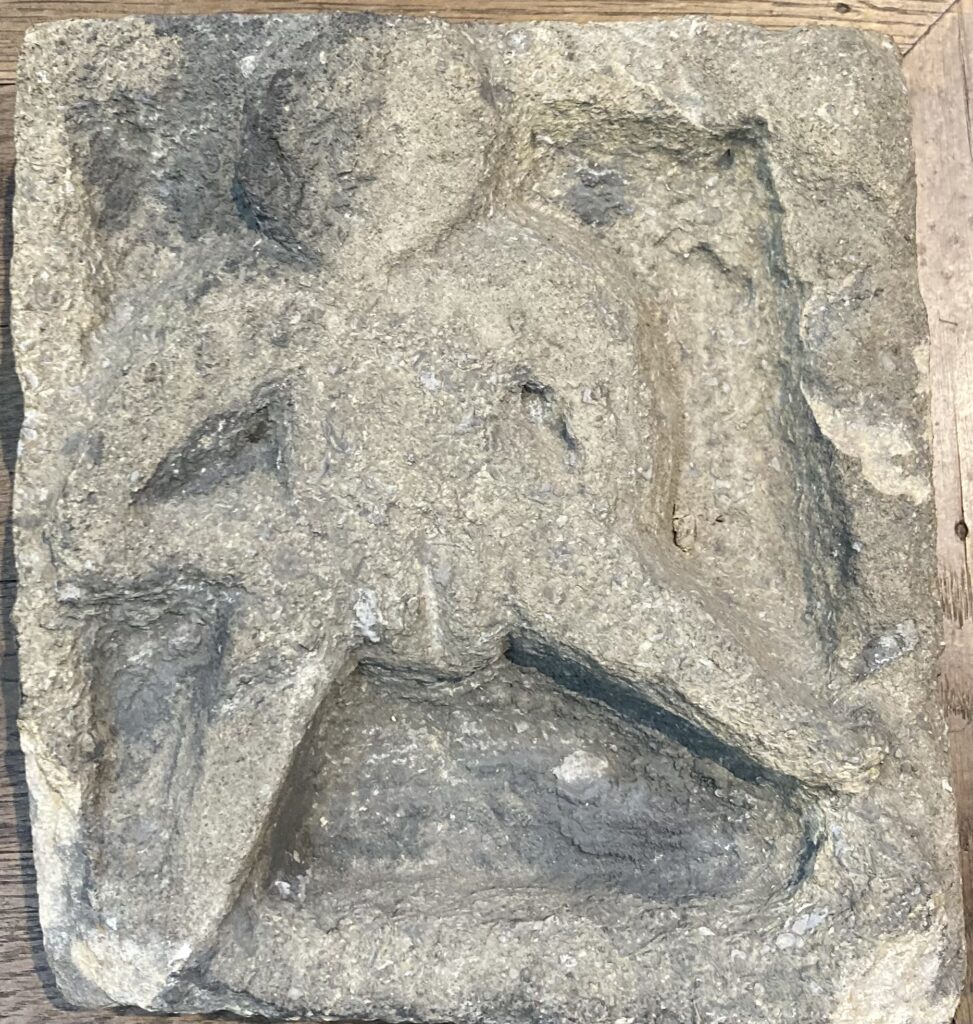
The sheela-na-gig
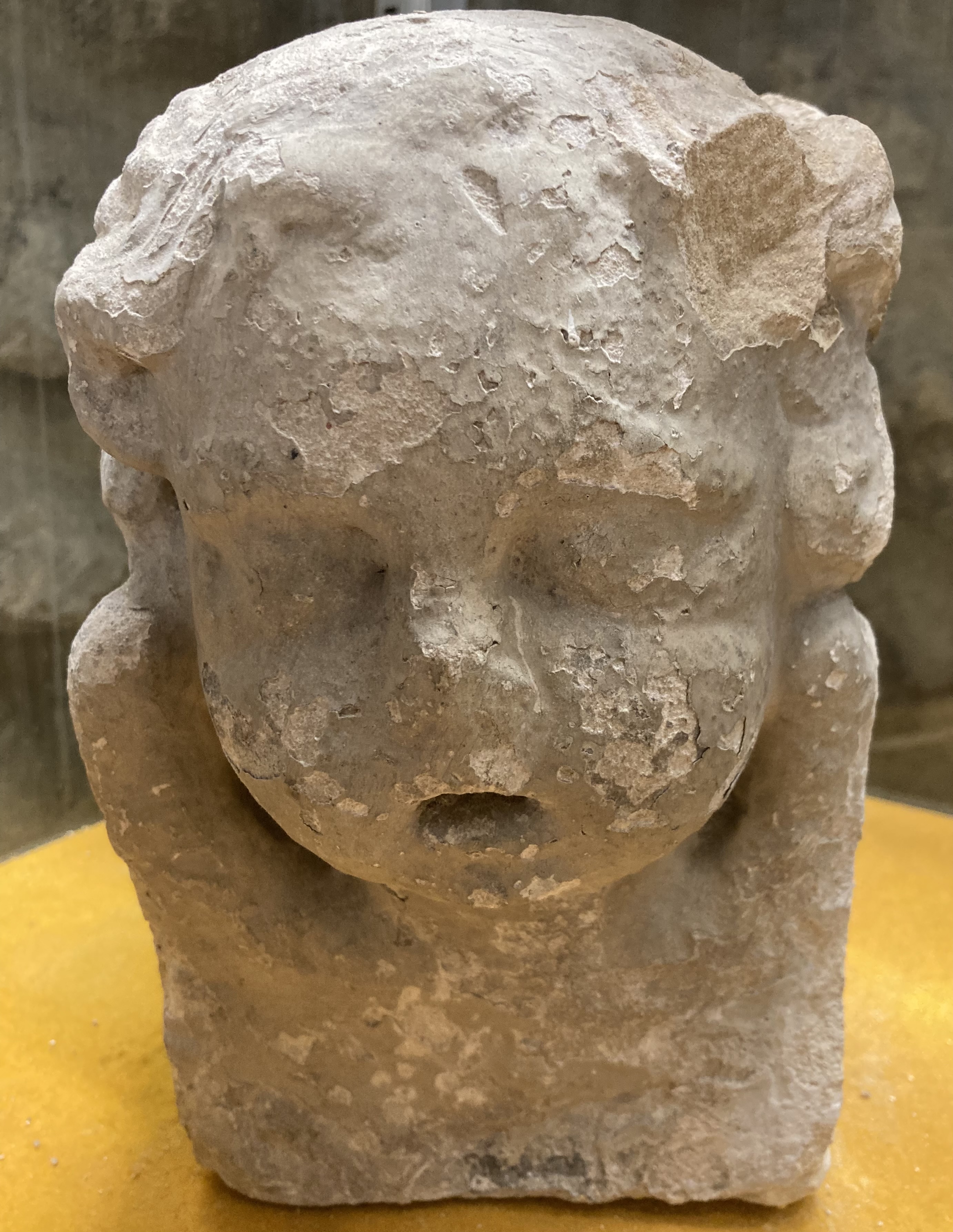
A cherub taken from outside of the tower
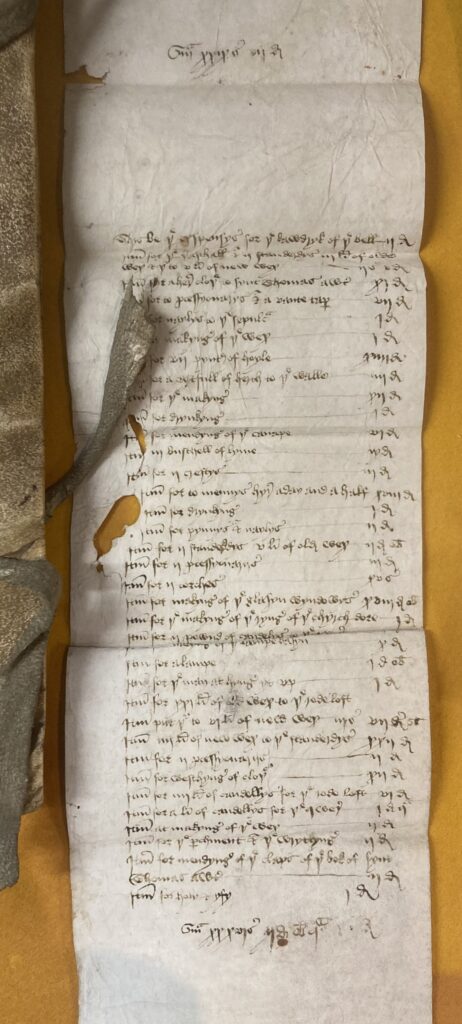
A draft of the church wardens’ accounts

The Ellacombe system – the bells don’t move.
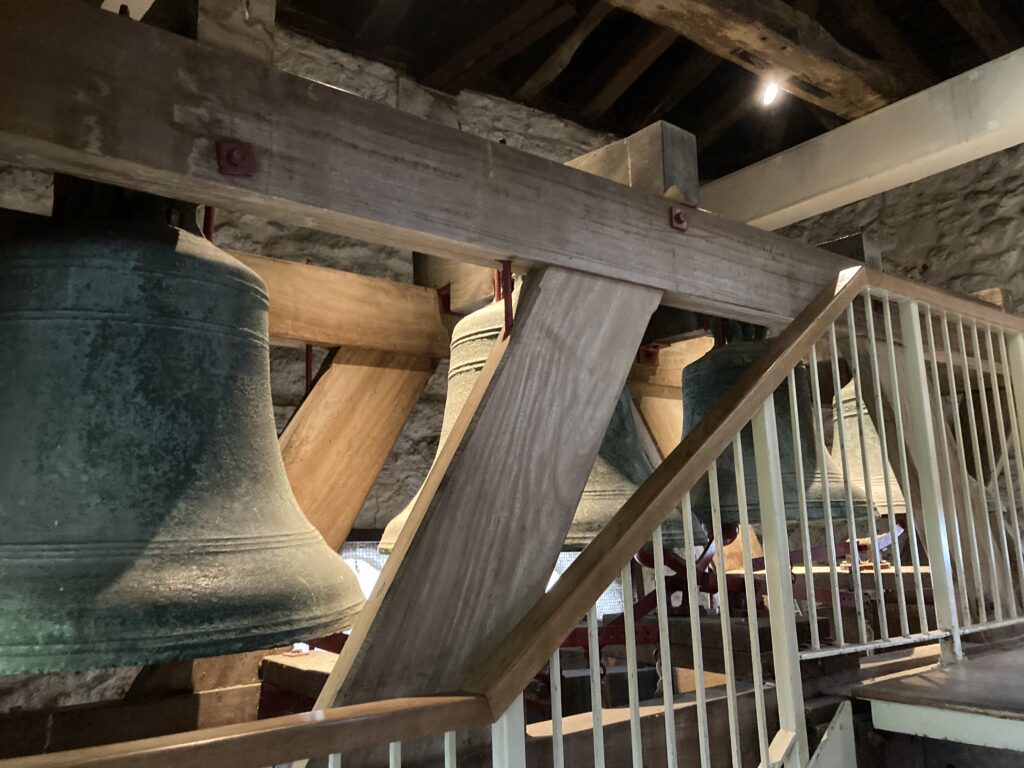
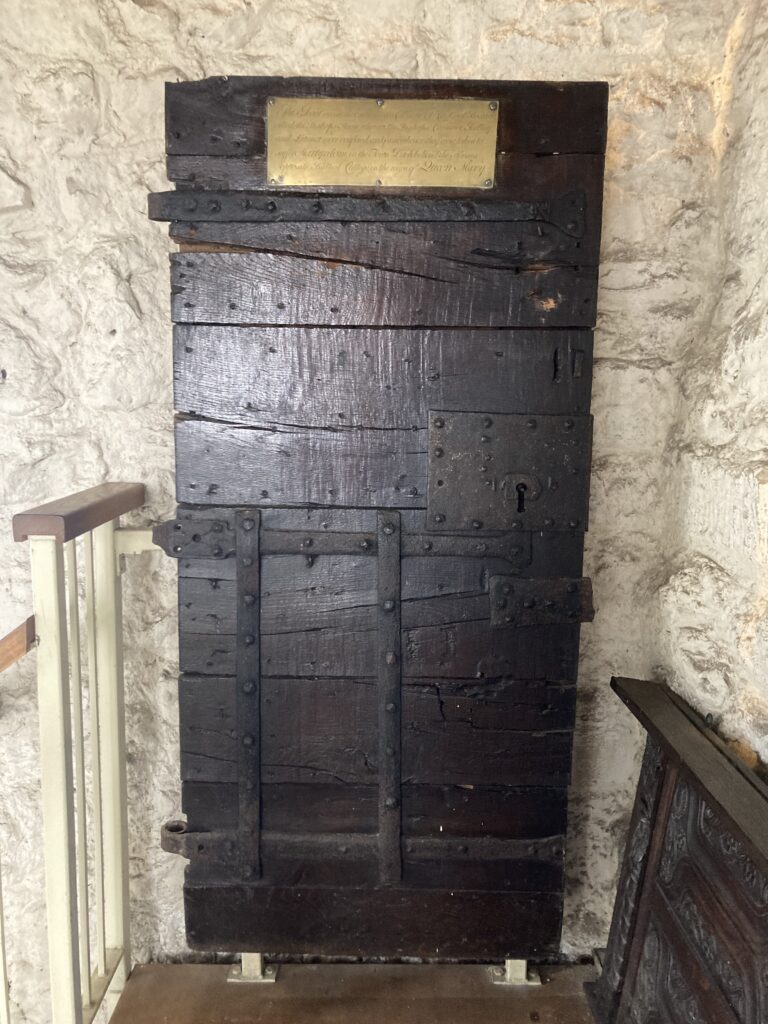
The door through which Bishops Latimer and Ridley and then Archbishop Cranmer were led to be burned at the stake (in 1555 and 1556). Cranmer was held at the Bocardo for pretty much all the time he was imprisoned. The Bishops spent a short time here but were mostly held under house arrest with Catholic families.
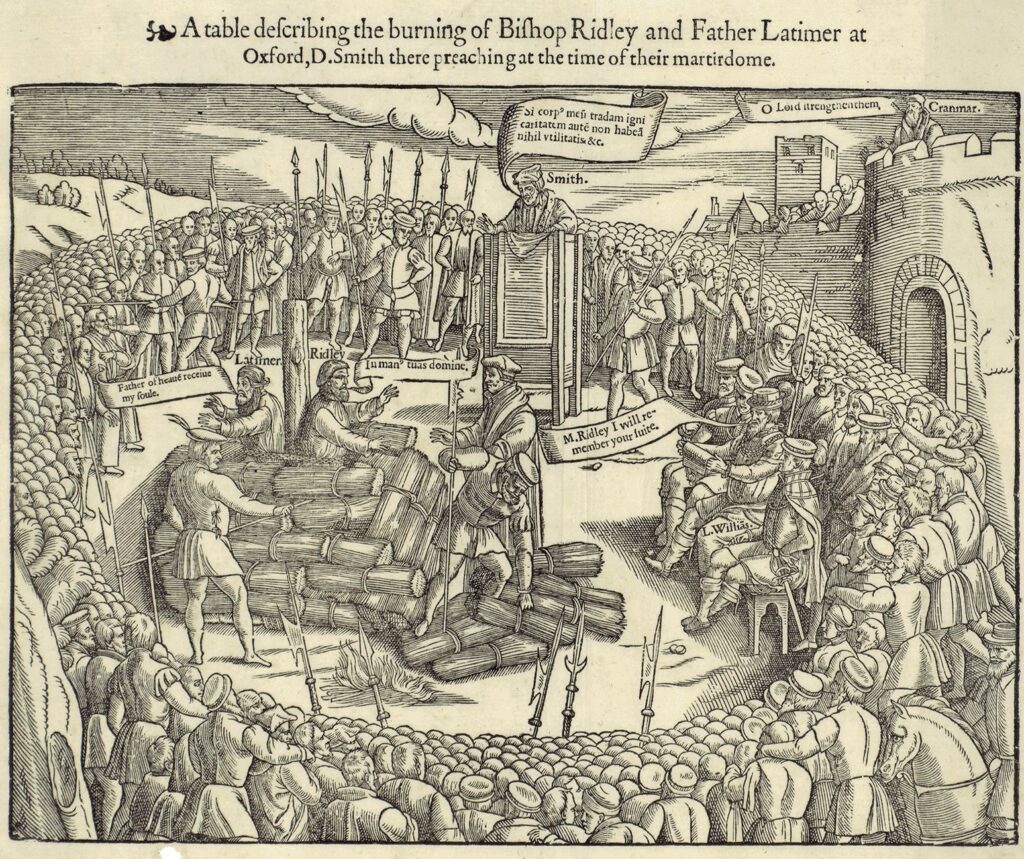
A page from Foxe’s ‘Book of Martyrs’ showing crowds gathered to watch as Latimer and Ridley are burned for heresy in what is now Broad Street. You can see Cranmer in the top right of the picture having been bought out to watch his friends. It looks like he is standing on one of the city wall bastions which would have been accessible from the tower – it is unsure if the tower behind was that of St Michael of the North Gate or St Georges (also Saxon) at the castle.
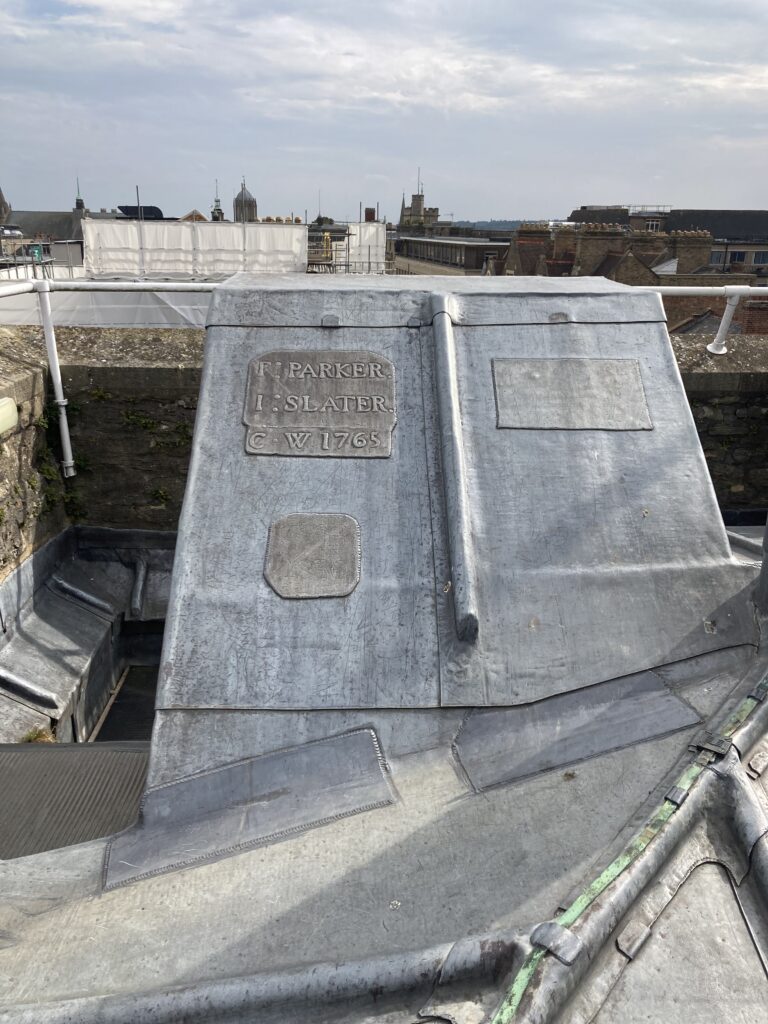
The roof has been re-leaded many times but is now leaking. It is covered in graffiti from the 10,000 or so visitors who climb the tower every year.
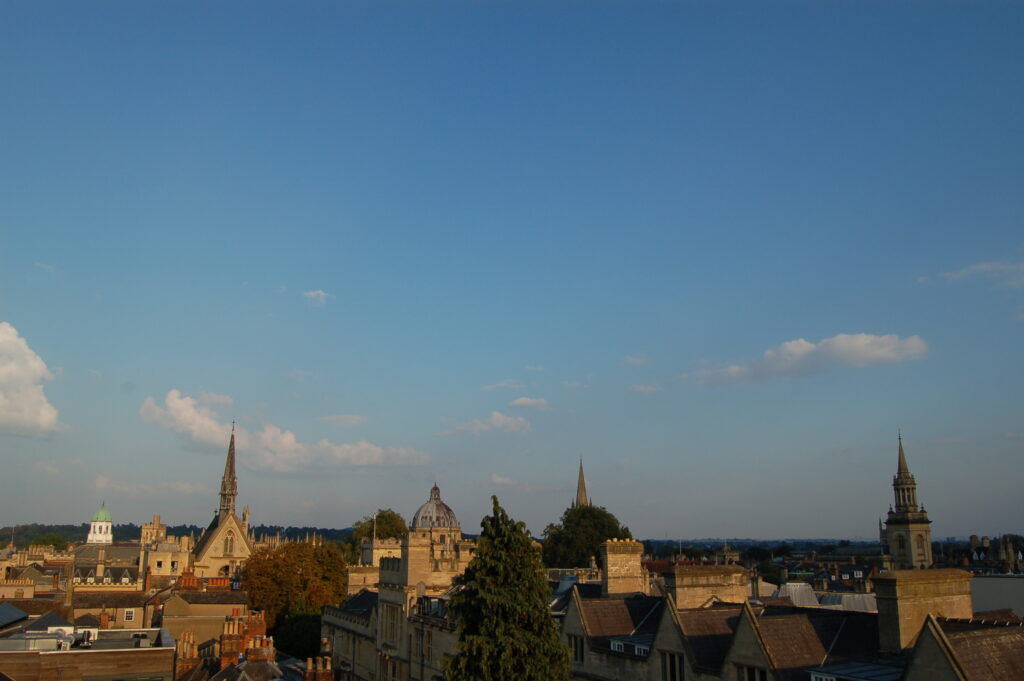
The view east from the top. However Reverend Buckley is worried that the sky line is being compromised.
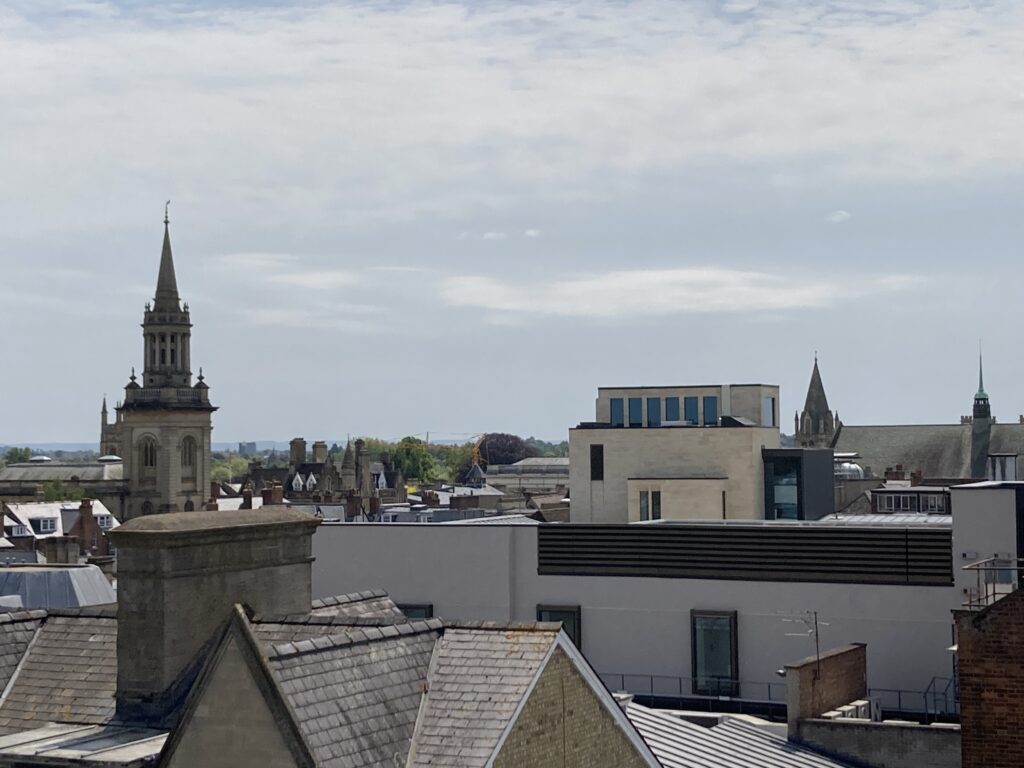
The new Jesus College building is higher than he would have liked. It now obscures the tower’s view south over to Merton and Christ Church.
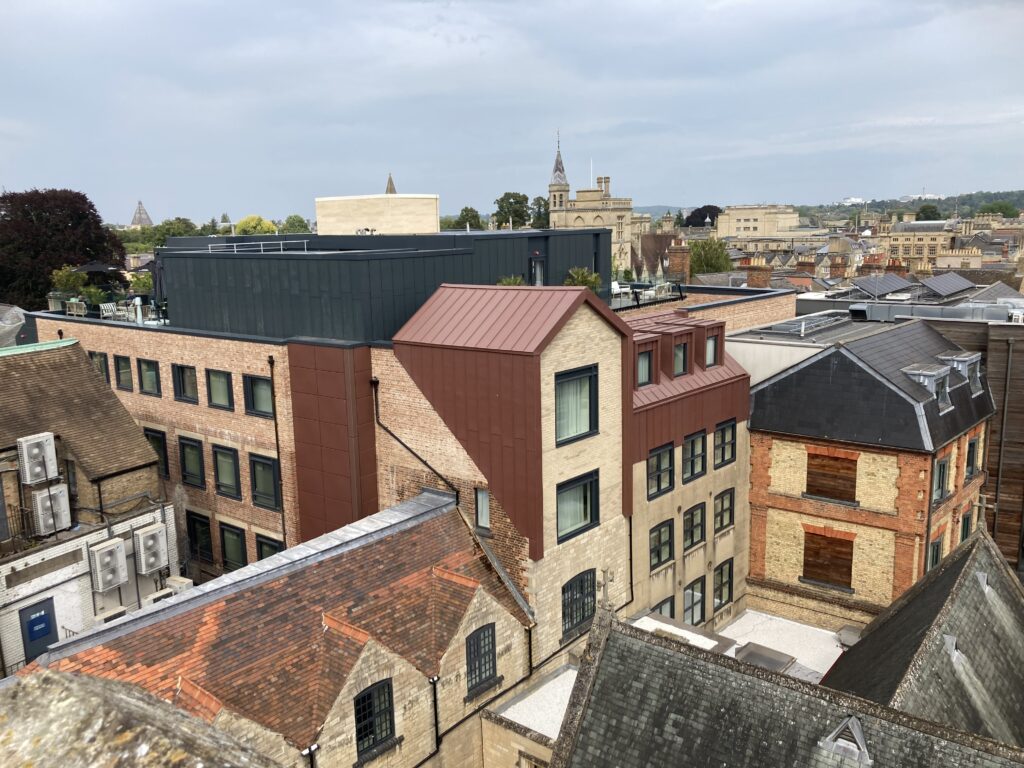
Similarly this view north-east, shows a box housing the air con system for The Store, the hotel that replaced Boswells. It cuts off the view of Balliol College tower.
You might also like to read:
